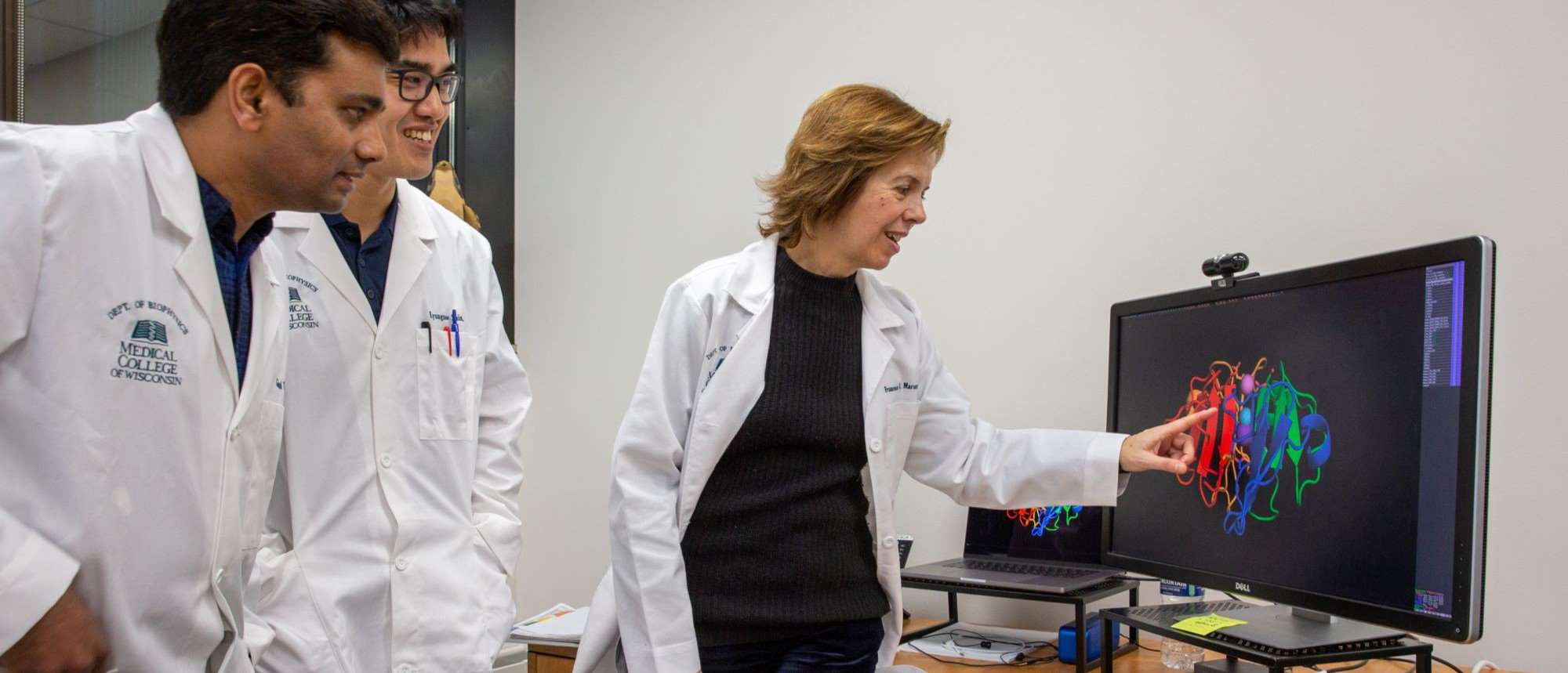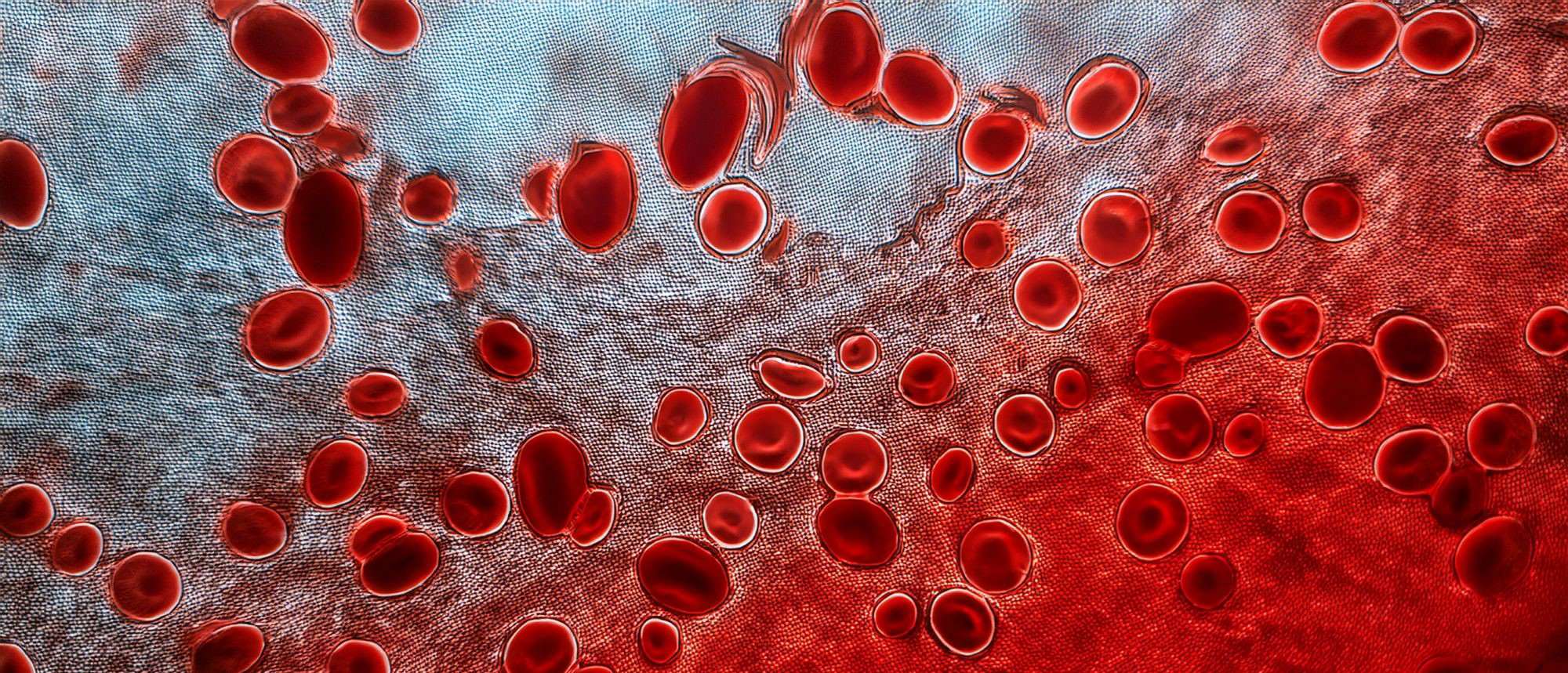Study Shows Bacteria Detect pH and Shape-Shift to Launch Tiny Survival Pods

When bacteria invade our bodies, they launch tiny satellites to ensure their survival.
These traveling spheres, known as extracellular vesicles, have many important jobs: hijack and diffuse the immune agents that have come to destroy them; seek and gather nutrients to keep the bacteria thriving; and assemble biofilms that block antibiotics from infiltrating the bacterial cells.
But just how these tiny vesicles are formed at the atomic level has been a mystery.
Thanks to the work of Francesca Marassi, PhD, professor and chair of biophysics at the Medical College of Wisconsin (MCW), scientists are now closer to figuring out how this happens.
Using advanced magnetic resonance techniques (MRI), Dr. Marassi and her team have discovered that the bacteria that cause Salmonella infections can sense pH change when they reach the acidic environment of the stomach. That in turn causes them to change shape and release vesicles out into the host body.
The study results, published in the Proceedings of the National Academy of Sciences, could have implications for not only treating bacterial infections but also for creating new kinds of vaccines and drug delivery systems.
"Figuring out how these vesicles are made, how they work, and how they can be made more stable and harnessed for biotechnology applications is an important goal," Dr. Marassi says.
Understanding How Bacterial Extracellular Vesicles Are Released
Previous studies by Dr. Marassi and coworkers showed that PagC, a protein on the bacterial cell surface, is essential for producing vesicles, which are essentially little bags made of the bacterial outer membrane. When PagC is activated, vesicles are formed and launched.
In the new study, Dr. Marassi and her team employed solid-state nuclear magnetic resonance (NMR), a technique that can characterize protein structures at the atomic level, to better understand how PagC becomes activated. Unlike other studies that analyze purified parts, Dr. Marassi has developed technology to study bacterial vesicles in their natural state.
"We’re seeing something as it actually lives in its native setting," she says. "We can probe atomic sites individually and see what happens when we change the environment."
The team discovered that PagC has three amino acids that act as pH sensors. Once the bacteria hit the stomach, these amino acids (called histidines) sense the acidic pH, become positively charged and repel each other. This causes PagC to change shape and form a wedge that pushes the bacterial membrane outward. The outward expansion of the bacterial membrane causes vesicles to bud out and launch into the body.
To show that PagC is the key driver of this mechanism, the team engineered E. coli bacteria to display PagC on its surface. They found that this caused E. coli to launch many more vesicles.
Launching Computer Simulations to Understand Bacterial Environments
The team is continuing to probe the structure of PagC to understand how other sites contribute to its function, and they are setting up large-scale computer simulations to better understand the mechanics of the vesicle budding event.
“This will be a big step forward for understanding how bacteria remodel their membranes to adapt to niche environments,” Dr. Marassi says.
Understanding how these vesicles are created and launched could allow scientists to develop new delivery systems for vaccines or therapeutic drugs inside the body. These therapies could be useful in treating a broad range of human diseases, including bacterial infections and cancers.
Dr. Marassi is working with scientists at the University of Pennsylvania and Harvard University to explore these applications. This study, supported by the National Institutes of Health, is a first important step for considering how the vesicles might be used therapeutically.
The study’s first author is Nicholas A. Wood and additional authors include Alyssa Kraft, Kyungsoo Shin and Tata Gopinath, all from MCW.



